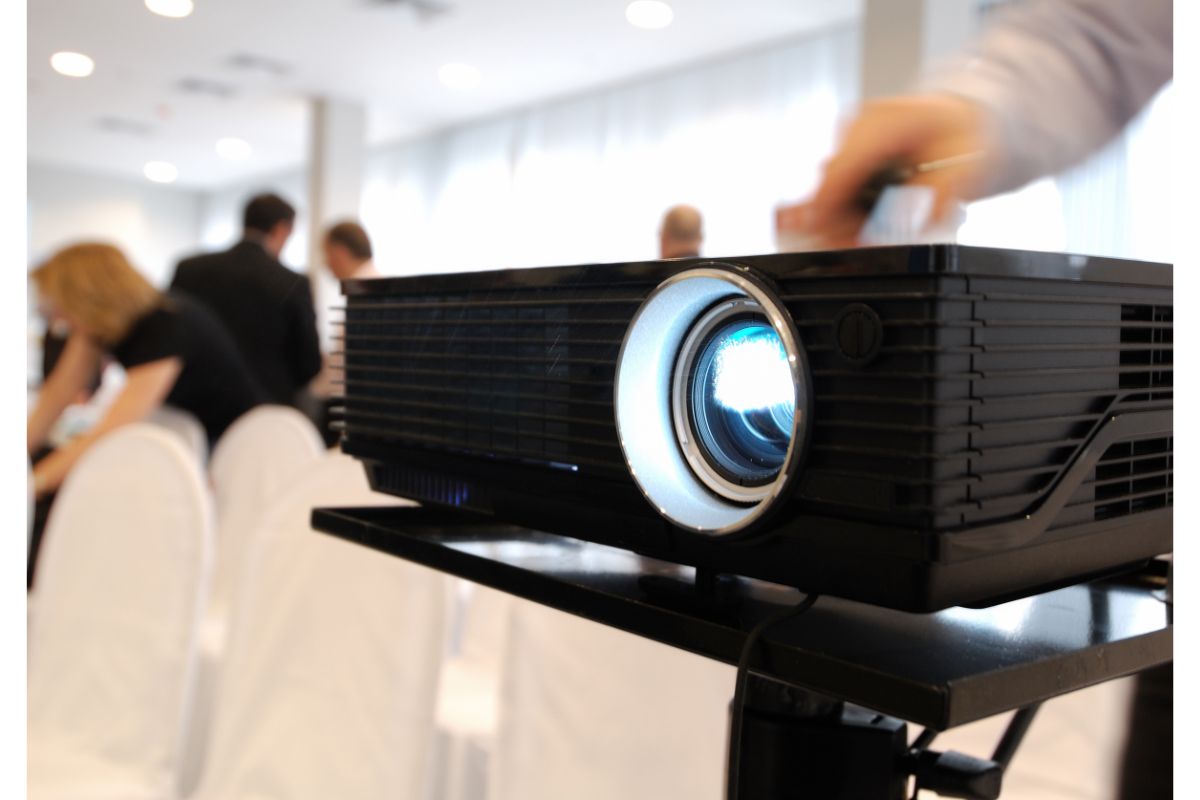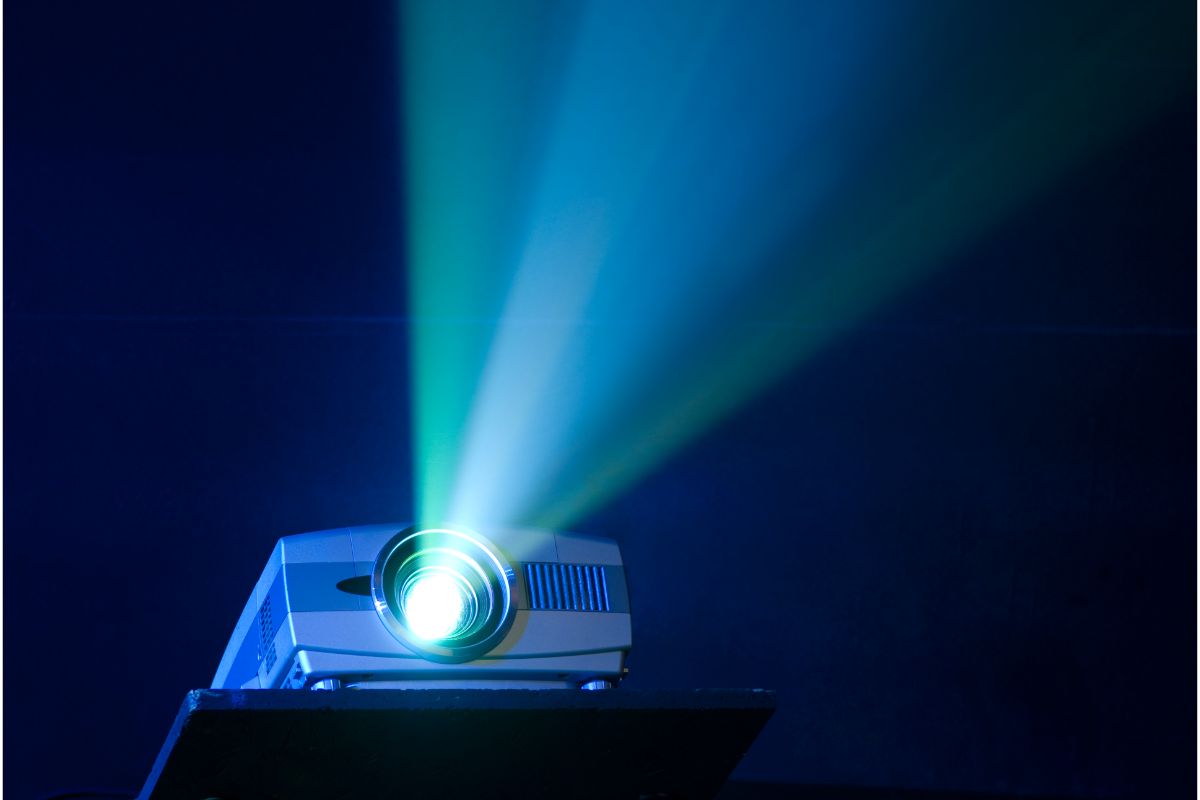Have you recently got a projector? Are you finding that the image is not as bright as you had hoped?
When you first begin to use a projector it can be difficult to get your set up right as there is a lot to think about but there is also a lot that can go wrong.
If you find that your new projector, or older projector, is not operating as bright as necessary there are a number of things that you can do.
In this guide, we are going to show you just how easy it can be to make a projector brighter!
Contents
How To Make A Projector Brighter
Below are some of the top fixes that can help to make a projector brighter.
Lighting
The first thing that can make a projector is the lighting of the space you are using it in and also the time of day.
Most people don’t realize that these are two of the biggest influences on how bright a projector is.
If you are planning to use a projector during the daytime you must be aware of the amount of natural light that is shining into the space you are using the projector.
If the space does not have curtains then it will be difficult to block the light.
The best time of day to use a projector is in the evening or at night.
This is because there will be very little to no natural light meaning the projected image will appear brighter and the quality of the projected image will also be better.
If you are in a meeting room we recommend that you turn all additional lights off to benefit the brightness of the projector.
If the lights are dimmable this will be the best choice to ensure the participants are not submerged in darkness.
Artificial lighting can easily be adjusted when using a projector and you should always adjust this lighting as the first port of call when struggling with the brightness of a projector.
This should instantly benefit the situation.
Background
The background that you are projecting the image onto will also influence how bright the projected image will be.
It is best to project images onto a smooth, white surface as this type of background will not interfere with the projected image and will act as a perfect base.
If you are projecting an image onto a darker-colored wall the colors from the projected image can bleed into the darkness and the brightness is also absorbed by the dark background.
Although it is possible to purchase black projector screens these are manufactured especially to project images but a dark-colored wall is not.
To get the most out of your projector and to benefit from the brightness it can be worthwhile investing in a good quality projector screen, particularly if you are using the projector for professional events.
If you are using the projector infrequently for personal use you can hang a white bed sheet and project the image onto this as a background. While the image quality may not be very clear the brightness will be good.
Clean The Projector Lens
If the brightness of your projector was better when you first purchased it you may simply need to clean the projector lens.
As the lens is glass dirt and dust can often collect across the lens which ultimately impacts the quality and brightness of projected images.
Use a clean microfibre cloth to clean the lens. It is best to gently wipe the lens with a clean microfibre cloth before every use.
Turn Off Eco Mode

Some projectors will have a power-saving mode or an eco mode.
This is when a projector operates using a lower level of electricity than what it requires when working at the machine’s maximum.
OPerating your machine in eco mode can affect the brightness and so by turning this setting off you may find that the brightness of your projector will be instantly improved.
Adjust The Lumens
If your projector has got adjustable lumens we recommend that you increase the lumen power on your projector.
The lumen represents the brightness of the bulb inside the projector. Lower lumen projectors are only suitable for use in dark rooms and often require a decent quality projector screen.
By increasing the lumens on your projector you will instantly see a difference in how bright the projected image is.
If your projector does not have adjustable lumens then this solution unfortunately will not work in your case.
Projectors usually range from a minimum of 1,500 lumens to 5,000 lumens in a projector.
To put it in context, direct sunlight can overpower a 4,000-lumen projector and so it proves that higher lumen projectors are necessary for daytime use.
Change The Bulb
Just like the bulbs in your house eventually need to be replaced this is also the case with projector bulbs.
For some projectors, this is a very simple task but for others, you may need a professional to assist you.
Move The Projector Closer To The Screen
If a projector is too far from the surface or screen you are projecting onto then the image quality and the brightness can be affected.
By moving the projector closer to the screen the image will become clearer and brighter but do be aware that this will also make the projected image smaller.
Final Thoughts
We hope that our troubleshooting solutions help you and that you find that by implementing some of these suggestions you will notice an improvement in the overall brightness of your projector.
If you are still struggling it may be worthwhile selling your current projector and purchasing a projector that has higher lumens which will off course give you a brighter projector.
These types of projectors do tend to be pricier but they can be worthwhile.
It can be possible to buy a second-hand projector with higher lumens which will help to offset the initial cost but selling your current projector will also help to cover this cost.
